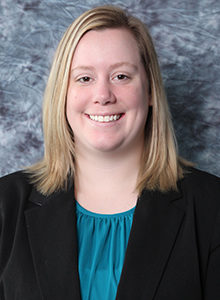
As Dr. Stephen Shore said, “if you’ve met one individual with autism, you’ve met one individual with autism.” Autism is a spectrum disorder with great variability in support needs from one person to the next. Given the spectrum of the disability, services and care for children with autism must be as individualized and unique as they are. Therefore, children with autism are often supported by a team of providers across various settings. Cox et al. (2012) identified the following seven support areas and the professions providing those supports for children with autism:
- Communication needs supported by speech/language pathologists (SLP);
- Social-emotional needs supported by psychologists or counselors;
- Sensory-motor needs support by occupational therapists (OT) or physical therapists (PT);
- Adaptive daily living skills supported by OT;
- Cognition needs supported by special education professionals;
- Behavior management needs supported by behavior specialists or behavior analysts; and
- Biomedical needs support by physicians, nutritionists, or other medical professionals.
In school settings, multidisciplinary teams consist of any combination of the aforementioned providers. Students might receive behavior support from a behavior specialist, board certified behavior analyst (BCBA), or even school psychologist. They will be supported in academics by the special education teacher, general education teacher, and paraprofessionals. Their related service needs (e.g., speech/language needs, adaptive living skills, sensory-motor needs) are met by the SLP, OT, PT, or vision therapist. Social skills and communication needs can be met by the special education teacher, BCBA/behavior specialist, school counselor, and SLP. Additionally, if the child receives services in the home, a member from that team, typically the BCBA or behavior specialist, will collaborate with the school team to ensure consistency across environments. There is a lot of overlap across professionals in the supports they might provide for a child with autism. Depending on the needs of the child, the team can range from very small to quite large. To best serve children with a variety of support needs it is critical that providers maintain working, collaborative relationships as research suggests that collaborative teams and program planning can lead to improved student outcomes (Hunt et al., 2003).
For example, Joaquin is a third grade student with autism. He spends most of the day in the inclusive setting, working out of the general education curriculum. He has social needs, sensory needs, and communication difficulties. At school, he is supported by a team of professionals. The general education and special education teachers work closely together to adapt the curriculum and monitor Joaquin’s progress within the curriculum. The special education teacher, SLP, school BCBA, and home BCBA work together to support his social skill and communication needs. The special education teacher, OT, school BCBA, and home BCBA collaborate to meet his sensory needs. The whole team meets at least annually for his IEP meeting. His home BCBA observes him at school and develops programming at home to work on generalization of skills and provide consistency with school programming. His school BCBA observes him and meets with the home BCBA to ensure consistency with addressing behavioral needs. His OT and SLP work directly with him and provide consultation for his general education teacher, special education teacher, and home BCBA. The size of his team and overlap of professional expertise necessitates that the members are in regular communication and work together.
Individuals with autism are more likely to have co-occurring diagnoses, such as gastrointestinal problems, epilepsy, sleep disturbances, feeding challenges, attention-deficit/hyperactivity disorder, anxiety, and depression, than the general population (Al-Beltagi, 2021). Further, individuals with communication deficits may not be able to effectively communicate pain or other signs and symptoms of these conditions. These individuals may be under the care of a developmental pediatrician, specialist, or mental health counselor to receive diagnosis and treatment for these co-occurring conditions. Previously mentioned team members, including BCBAs, teachers, and related service members, may be involved in collaboration with these medical professionals to assist in providing a description of challenging behaviors and symptoms, which may help to both diagnose and effectively treat a co-occurring medical condition. In addition, if medications are prescribed, the team should be aware of the dosage, duration of action, and particularly any potential side effects (Copeland & Buch, 2020). Team members can also collaborate to teach skills that facilitate medical assessment (e.g., tolerating a blood pressure reading, blood draw, or ear exam).
With multidisciplinary teams, there are bound to be differing treatment opinions that present potential areas of conflict within the team. To address navigating proposed treatments stemming from differing theoretical bases, Brodhead (2015) proposed a decision making model to aid in navigating treatment decisions using the following questions:
- What is the treatment?
- Is the child’s safety at risk?
- Are you familiar with the treatment? If not, familiarize yourself with it and reassess child safety.
- Is the treatment’s success possible when translated into behavioral principles?
- Will the treatment negatively interfere with the child’s other goals?
- Consult the Checklist for Analyzing Proposed Treatments – a checklist developed by Brodhead that evaluates treatment components within seven domains (i.e., function-based treatment, skill acquisition, social outcomes, data collection, treatment integrity, social validity, and resources).
- Are the impacts to the child sufficient to justify the possibility of compromising the professional relationship?
This decision making model can be useful for professionals who may not agree with a proposed treatment on a conceptual basis. Through this model, professionals can determine if and when they should question certain treatments.
Let’s revisit Joaquin’s situation. Suppose that he has been having difficulty attending to tasks and has been moving around a lot. The OT recommends doing “heavy work” prior to long periods of sitting and academic tasks. Initially, the special education teacher is in agreement, but the general education teacher and both BCBAs are hesitant to try the intervention. Using the decision making model above as proposed by Brodhead, the team first establishes that the intervention consists of heavy work such as pushups or jumping on the trampoline (step a). Next, they determine that the child’s safety is not at risk (step b). The team takes some time to familiarize themselves further with the intervention through discussion with the OT and other resources (step c). After further review, they maintain that the child’s safety is not at risk with this intervention. Through this process, the BCBAs were able to translate the intervention into behavior analytic terms (step d) and determine that the intervention aligns with an evidence based practice called antecedent exercise. At this point, the team reconvenes and decides to move forward with the intervention without hesitation. Using Brodhead’s structure for decision making, the team was able to avoid conflict and come to a decision in an effective, collaborative, and congenial way.
Elise Settanni, MEd, BCBA, LBS, is a Behavior Analyst and Jennifer Croner Lauriello, MSEd, BCBA, LBS-PA, is Clinical Director at Lehigh University Autism Services.
If you would like more information about Lehigh University Autism Services please contact our office via phone at (610) 758-2441 or visit our website at https://ed.lehigh.edu/center-for-promoting-research-to-practice/autism-service.
References
Al-Beltagi, M. (2021). Autism medical comorbidities. World Journal of Clinical Pediatrics, 10(3), 15-28. https://doi.org/10.5409%2Fwjcp.v10.i3.15
Brodhead, M. T. (2015). Maintaining professional relationships in an interdisciplinary setting: Strategies for navigating nonbehavioral treatment recommendations for individuals with autism. Behavioral Analysis in Practice, 8(1), 70-78. https://doi.org/10.1007%2Fs40617-015-0042-7
Copeland, L., & Buch, G. (2020). Addressing medical issues in behavior analytic treatment. Behavior Analysis in Practice, 13, 240-246. https://doi.org/10.1007/s40617-019-00342-9
Cox, D. J. (2012). From interdisciplinary to integrated care of the child with autism: the essential role for a code of ethics. Journal of Autism and Developmental Disorders, 42(12), 2729-2738. https://doi.org/10.1007/s10803-012-1530-z
Hunt, P., Soto, G., Maier, J., & Doering, K. (2003). Collaborative teaming to support students at risk and students with severe disabilities in general education classrooms. Exceptional Children, 69(3), 315-332. https://doi.org/10.1177/001440290306900304







